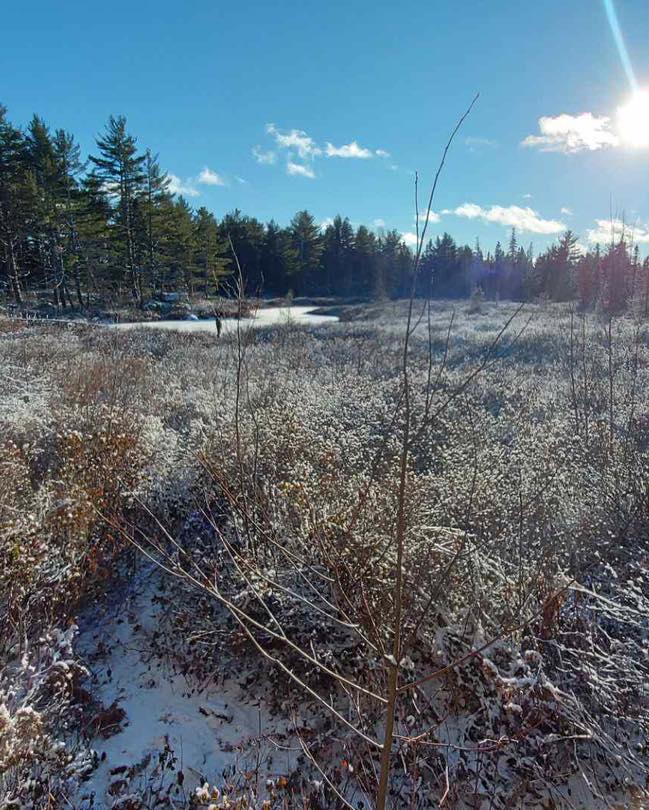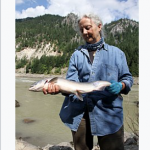Nina Newington on Talking Radical Radio – 1 (Nina N on TRR-1)
These three pages are a transcript from an interview with Nina Newington on Talking Radical Radio, hosted by Scott Neigh on May 3, 2022. Use the Navigation Menu below to go to a post about the interview and to move between these 3 pages. To make it easier to read on the web, I have added subtitles and some bolding, also added some links and photos. The minutes into the interview is inserted every now and then. Nina is a pleasure to listen to, this transcript is an added convenience to follow and record her words, not a replacement for them!
 Navigation Navigation–Post May 8, 2022 –Nina N on TRR-1 (This Page) –Nina N on TRR-2 –Nina N on TRR-3 Talking Radical Radio |
Scott Neigh
My name is Scott Neigh and this is Talking Radical Radio.
Nina Newington
We don’t have time to mess around anymore. Just as with CO2 levels rising, the loss biodiversity across the planet is devastating. So it seems like it’s up to us to get in the way and start demanding action and refuse to allow the destruction of the last remaining mature forests in Nova Scotia.
Scott Neigh
That’s the voice of Nina Newington. She’s today’s guest on Talking Radical Radio. This show brings you grassroots voices from across Canada. We give you the chance to hear many different people who were involved in many different struggles, talk about what they are doing, why they are doing it and how they are doing it in the belief that can strengthen all of our efforts to change the world.
Some background on Nova Scotia, Nina and the issues
The amount of forested land in Nova Scotia is fairly modest compared to most other provinces and almost none of it is Old Growth. However, though employment in the sector has been steadily declining for many years, there is still enough that the province maintains an active forestry industry. Given the devastating impacts that it’s had on ecosystems in Nova Scotia, the rules governing how the industry operates have been hotly contested for a long time.

NSDNR Minister MacDonell at rally on Oct 29, 2010: “There’s gonna be a reduction in clearcutting in Nova Scotia.” View video
It didn’t pan out
There have been a couple of major reform efforts in the last 15 years, attempting to introduce more ecologically sound approaches but resistance by industry has been fierce and largely successful. And in their victory in last year’s provincial election over the incumbent Liberals, the Conservatives promised to protect 20% of the province’s land [compared] to the Liberals’ 17%, yet little progress has been made on implementing that either.
Today’s guest describes the overarching tendency across governments in recent decades as “talk and log”, making promises of consultation and change while actively facilitating the same old ecological harms.
Nina Newington came out as a lesbian in 1970s England, which she said, “left me with a fairly sceptical take on the structures of power”. She lived for many years as an undocumented immigrant in U.S., where she was involved in environmental action related to a nearby nuclear reactor and in the early 2000s she and her wife moved to Canada.
She lives on a farm in southwest Nova Scotia which has given her plenty of opportunity to witness the “devastating effect that industrial forestry was having”. And that has become a primary focus for her grassroots political work. At some point she discovered the Nova Scotia branch of Climate Action Group Extinction Rebellion and co-founded a chapter in her area which at this point, has in a loose sense at least, been the base of three major forest defence direct actions.
The most recent started last December. Newington saw a comment in a Facebook group from a local farmer, hunter, and trapper who was frustrated that nearby Crown land where he had a cabin for many years was set to be logged within a couple of weeks. She connected with him, they talked it over and they decided to set up a camp.
The threatened forest is not Old Growth, but at about 80 years old it is still older than the vast majority of forest in the province. It is ecologically important as it provides habitat for a number of Species-at-Risk and it connects three large wetland areas.
They call their action “Last Hope Camp” after a hunting camp that had existed in the same place in the early 20th century. In those years, game was already getting scarce and hunters who didn’t have the meat they needed to last the winter would often go there and have a good chance of finding moose.
In the almost six months since the camp began, around 80 people have spent time there including 50 who have camped and many more have acted in support in urban areas.
Of particular importance to the camp, was a visit early on from the chief of the local district of the traditional Mi’kmaw governance system who presented them with the flag of the Seven Mikmaw districts and endorsement of their presence on the territory defending the forest.
So far, though it was supposed to start late last year, there’s been no sign of efforts to begin cutting. At least part of the reason for that is that the group has successfully identified numerous new instances of Species-at-Risk, particularly rare lichens that the provincial government supposedly thorough assessment of the forest had somehow missed.
The Camp is demanding that permission to log this particular piece of forest be rescinded. They are also asking that a larger piece of territory that encompass where the camp is as well as some of the province’s miniscule remaining Old Growth be protected.
In the bigger picture, they hope a broader movement can push the province to end its talk and log orientation and begin taking real action to preserve the province’s forests.
I speak with Newington about the practicalities of direct actions in defence of forests and about the Last Hope Camp.
5:08
Nina Newington
My name is Nina Newington I live on the north mountain in Nova Scotia near the Bay of Fundy. I’m a member of Extinction Rebellion and a very loose group called Forest Protectors. In the end of 2020 I was arrested at the end of an eight week blockade of logging roads in southwest Nova Scotia, trying to protect endangered moose habitat.
And well now I’m at it again, camped out at a camp we call Last Hope, trying to protect the small forest that’s ecologically important to Species-at-Risk and also just one of the few remaining standing forests in a sea of clearcuts.
An activist’s journey in time and place
I’m a lesbian, I came out in 1970s England which was not a very friendly place to come out so I had a kind of outsider’s view and that left me with a fairly sceptical take on the structures of power of the country that I grew up in and then when I moved I moved to America for 25 years, where I lived as an illegal alien for most of that time. During that time I was also living downstream from a nuclear reactor and that was a place where I got involved with environmental action.
Eventually we decided to immigrate to Canada and we lived in Edmonton for a couple of years where I learned a lot about indigenous rights. I worked at a mostly indigenous addictions treatment centre and had a lot of indigenous friends and got a really different take than the settler Canadian version in which people kept reassuring me there was no racism in Canada.
I’m also a writer and I wrote a novel called Cardinal Divide. In 2008 we moved to Nova Scotia and quite quickly began to see the devastating effect that industrial forestry was having on the whole province. It’s kind of a have-not province that’s been at the mercy of pulp and paper mills for 100 years. Particularly in the last 30, the clearcutting is gone crazy.
Nina’s joy and grief of experiencing nature and where it led
I live on a farm and we have endangered barn swallows and I get great joy from watching them but also always that sort of clutch of grief at how endangered they are. And I realized that the thing that’s always fed me that connection to the natural world was also a source of pain in these days. There came a day when I was looking up at the swallows and feeling that whole mix of joy and grief and guilt and helplessness and I heard myself say out loud “I’ll do what I can”.
And you know sometimes you say something and you realize that it is true and it’s coming from a very deep place inside you.
So ever since then I’ve been doing what I can and that for me has involved trying to, in the words of Alexandra Morton, the wonderful whale scientist and salmon protector, her words are “if you can do it peacefully and honorably, getting in the way of what damages the earth is incredibly powerful and it works.
The Extinction Rebellion Connection
So I have started getting in the way of what damages the earth and here in rural Nova Scotia what called to me was to get in the way of the clearcutting of forests and the destruction of habitat for wildlife which is also our habitat. I happened to see a picture on Facebook of a group of people holding an Extinction Rebellion banner across a logging road in southwest Nova Scotia. I thought, ‘thank God somebody’s actually doing something like really getting in the way’ and ‘who are these Extinction Rebellion people?’
I got connected and we started a chapter here in Annapolis county where I live and very loosely, that’s been the organizing base for three different actions where we’ve protected forest, or tried to protect forest in one case, by camping out and getting in the way.
——–
Navigation
–Post May 8, 2022
–Nina N on TRR-1 (This Page)
–Nina N on TRR-2 NEXT PAGE
–Nina N on TRR-3
Talking Radical Radio

Beals Meadow Eastern End, Close to planned harvest area. Mar 20, 2022
Extinction Rebellion Mi’kma’ki / Nova Scotia photo



